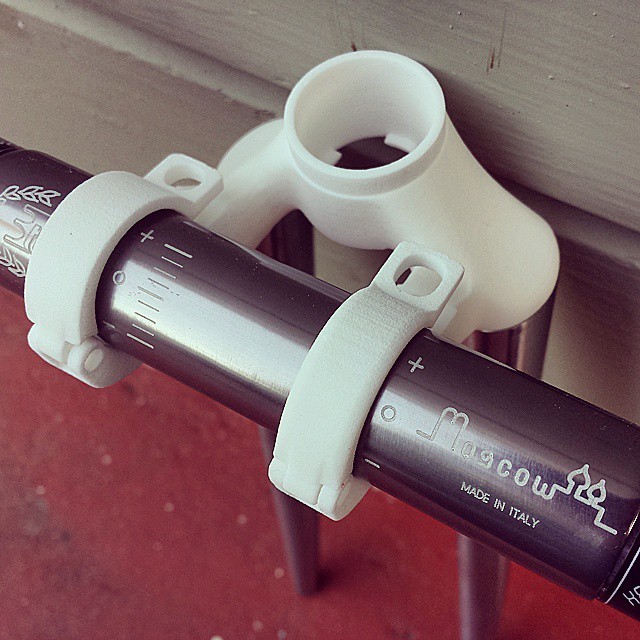 |
| New clamp front and center! Notice how it's much smoother than the other clamp, and has a wider area for some bolt wiggle room. |
Theoretically, once I printed this in 3D it should have been fairly easy to move to casting - right? That sounds reasonable enough.
I was wrong. I was very wrong. Let me tell you why.
1) Casting in steel is not something people tend to do in their homes
I had been hoping to find a local artist who can make these. A surprising number of people have forges in their backyards (or basements!) and they cast their own things in pewter, bronze, etc. Steel, however, requires a much higher temperature and isn't really a home based hobby type deal...I'm sure there are people in the world that can do it, but my hunting around resulted in nothing. So I started e-mailing casting companies.
2) Most places require you to make the tooling
When I reached out to casting companies, many required you to pay to make the mold to pour the wax in - only a select few let you either supply the wax models, or can print the wax models on site. A typical mold runs anywhere from one to twenty five....thousand dollars.
3) Most places have a large minimum order
Once I was able to find places that allowed me to supply my own wax castings, I had to find one that would allow for prototypes to be made. $50 a crown is a pretty sweet deal, but a minimum order of 100 was not something I could handle.
4) Wax prints have a maximum size limit
Once I found an awesome company that would let me supply wax, I went to get some wax prints made and sent their way...only to discover many wax printing machines, like the ones used by Shapeways, have a max size limit. My crown was too big! I went back to speak to the company about whether or not they could 3D print in wax (fortunately, they could!). Were this not the case, I would need to find another company that could print in wax - and they do exist, it's just another step - and have them provide the prints.
5) Files don't always play nicely together
The file format I'm used to working with, and used to submitting for prints anyway, isn't something that many industry level professional printers can read. Most larger companies use something like Solidworks for precision, and I was working with an obj format. Trying to convert an obj to an IGES file with open source software is a nightmare, so if you can work in Solidworks right off the bat...do it!!
After all of this, however, I can happily say that casting of steel prototypes is in the works! They should take about a month to be complete, and I'm keeping my fingers crossed that they come out smoothly.
I've learned a ton about this process, but it's by no means scared me away from future castings. The people that have helped me have been amazing, and I'm really hoping to continue doing business with them in the future for more fork crowns and other related framebuilding parts. The possibilities are endless!
you're doing a very very great job!!! keep givin' in!!!
ReplyDelete